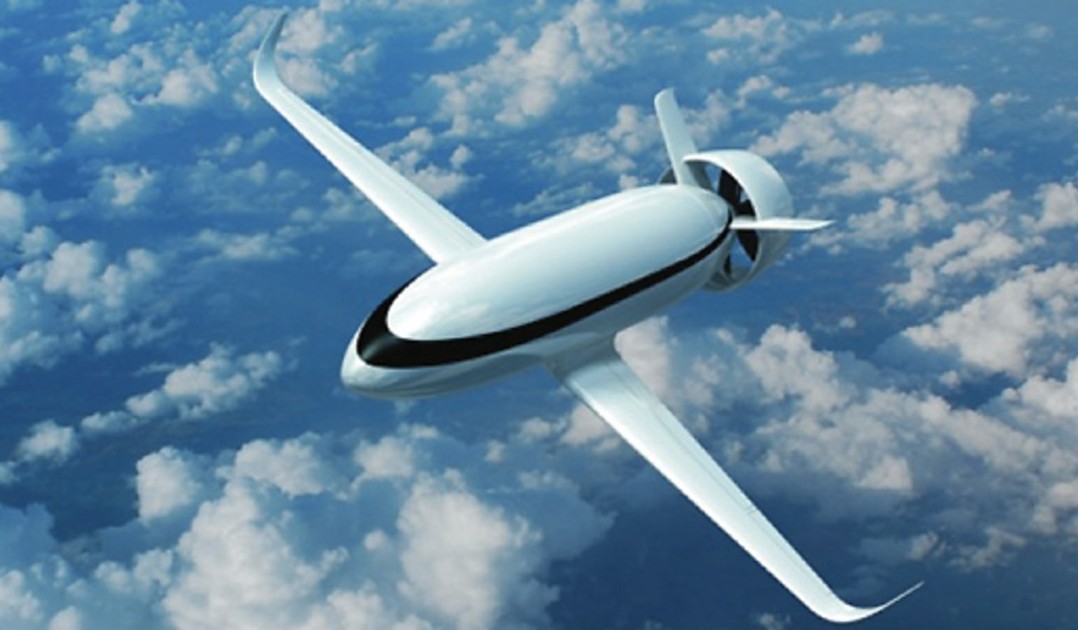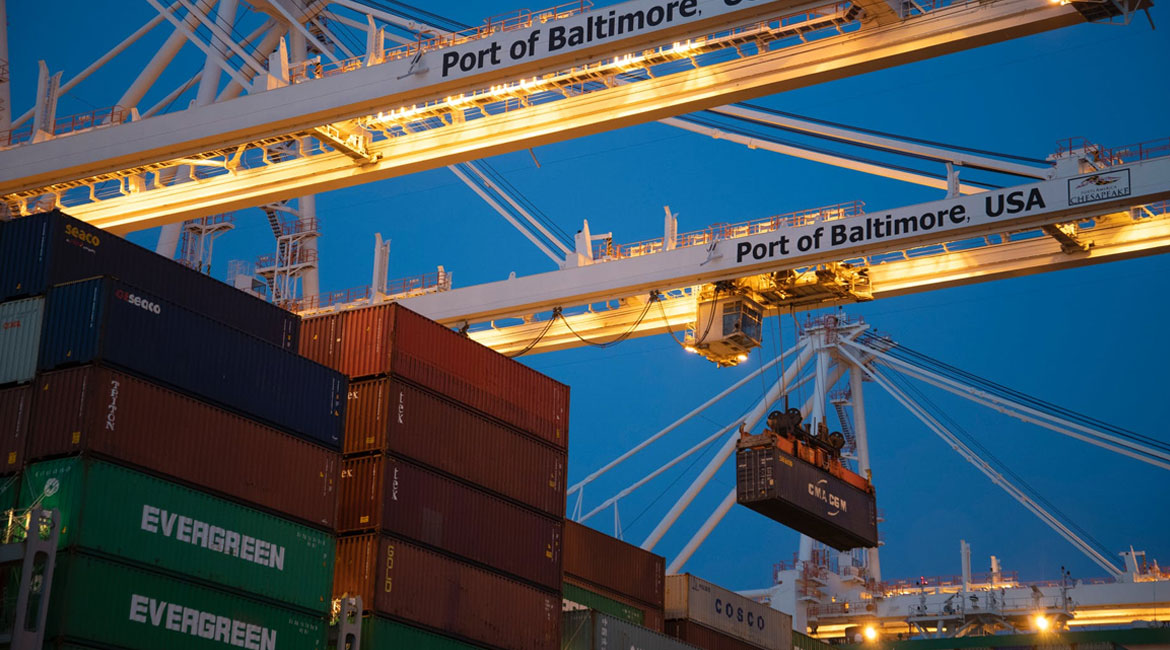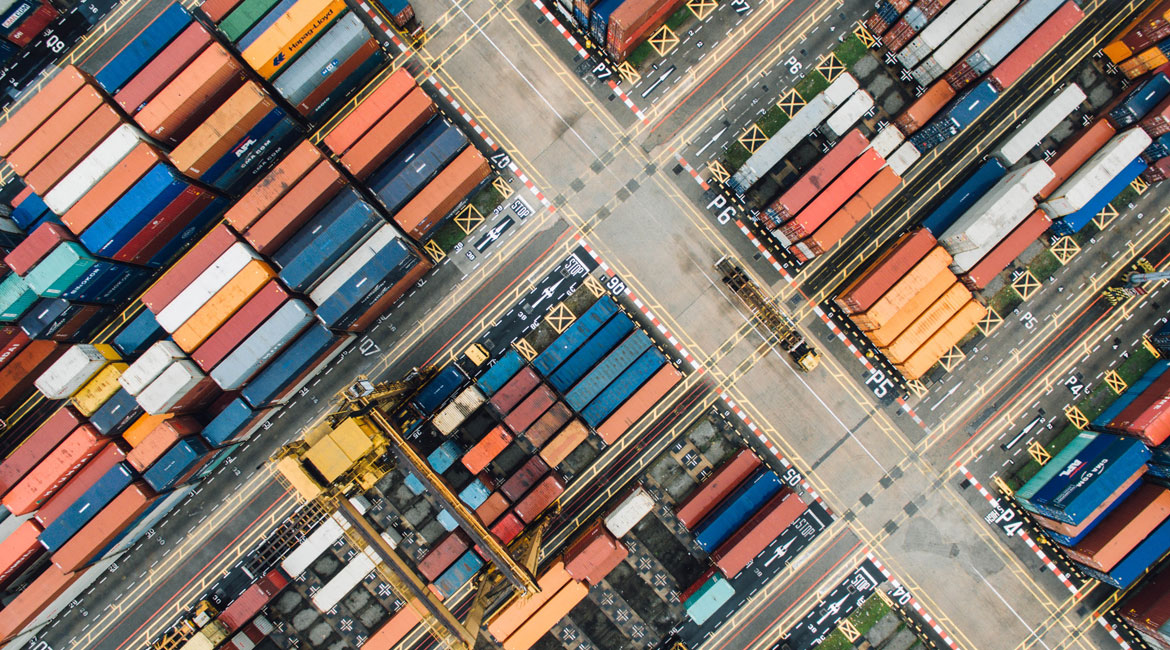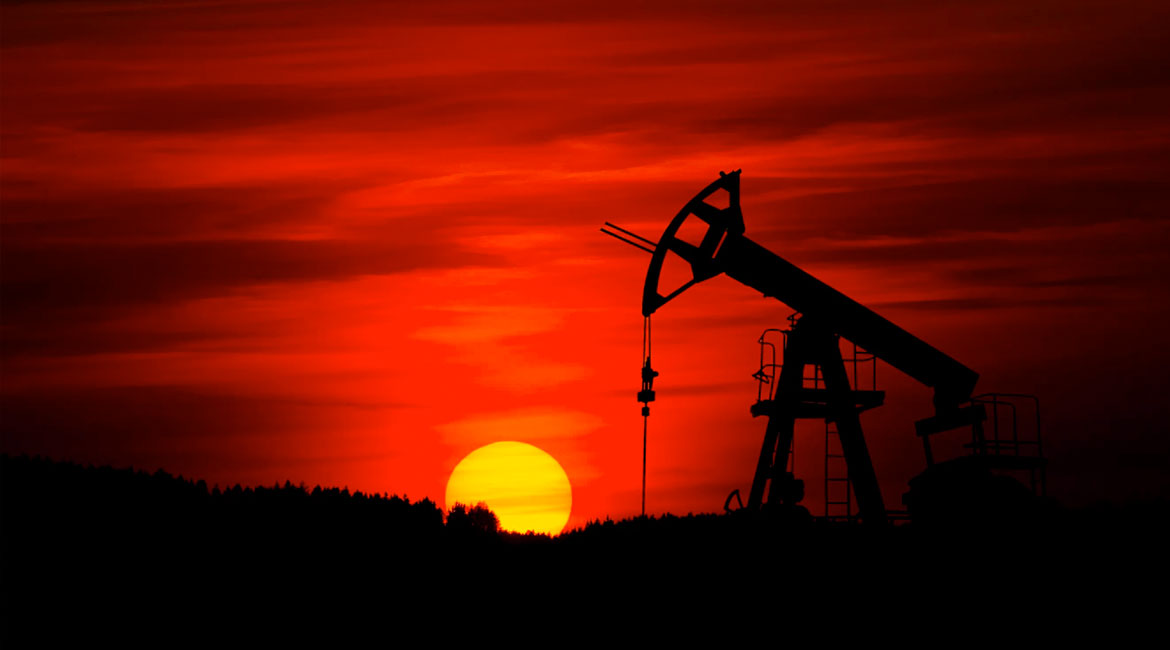IEA confirms a new record for CO2 emissions in 2023
In 2023, carbon dioxide (CO2) emissions from energy use reached their highest levels on record, according to a report by the International Energy Agency (IEA).- Written by Seref Dogan Doğan
In 2023, carbon dioxide (CO2) emissions from energy use reached their highest levels on record, according to a report by the International Energy Agency (IEA).- Written by Seref Dogan Doğan
The latest advancements in the maritime sector have seen innovators turn the dial back to rely on a trusted ancient resource – wind energy. – Written by Seref Dogan Doğan
A Bedford-based company has made history after signing a deal to produce and deliver ten 100-passenger helium airships. The deal, concluded between Hybrid Air Vehicles (HAV) and Spanish airline AV Nostrum, is expected to create 1,800 jobs in South Yorkshire and contribute to the UK’s sustainability goals.
The Airlander 10 airships will be built at a recently constructed green manufacturing cluster in South Yorkshire and are expected to provide an employment and financial boost to the local economy.
Beyond this, the Airlander 10, which HAV says will have less than a tenth of the carbon footprint per passenger of a traditional jet plane, represents a leap forward in the race towards a cleaner and more climate-friendly aviation industry.
Responsible for roughly 3% of global emissions, the aviation industry has long been a target for a green revolution. But climate-friendly air travel has remained largely within the realms of experimentation, until now. While various options including clean aviation fuel, electric planes, and direct capture devices have all received varying levels of consideration, the industry had shown little promise of a viable and scalable option that could drastically cut C02 emissions.
However, HAV’s futuristic Airlander 10 airships can potentially move the needle on climate progress within the industry. Acknowledging the progress that the company’s deal with AV Nostrum represents, UK business secretary Kwasi Kwarteng said, “hybrid aircraft could play an important role as we transition to cleaner forms of aviation, and it is wonderful to see the UK right at the forefront of the technology’s development.”
Kwarteng also noted that the local jobs being created by the deal was just as satisfying. “It is more proof of how the UK’s businesses are embracing new technology to drive growth and support high skilled UK jobs.”

There are many promising aspects to the Airlander 10 deal, but I believe industry players would be most interested by the multiple applications to which the aircraft may be put. HAV initially designed its airship as a surveillance and reconnaissance vehicle during intelligence missions in Afghanistan since it is less noisy than a helicopter and can stay in the air far longer. But it also has interesting applications in commercial travel.
With a 400km range and a rigid body that can land or lift off from any surface, the craft does not need a runway or pressurized cabins. Therefore, airship stations can be more space-efficient, while the aircraft itself can provide more windows and cabin space for passengers. According to Rebecca Zeitlin Head of Marketing and Communications at HAV, the Airlander 10 presents a more enjoyable, and potentially more luxurious, passenger experience. She says that “every seat will be a little bit like a business class experience. The whole experience will be more restful.”
Helium airships can also make an impact in disaster relief operations, such as combatting wildfires and effecting evacuations during emergency situations like tsunamis, flooding, industrial accidents, and earthquakes. The craft can carry more than 200 people per trip and potentially delivers four times the amount of water – up to 300 tons per day – traditional firefighting planes carry.
I think there’s a lot to anticipate from the blossoming rigid airship industry in the coming years. It would be to see how the aircraft performs in real life situations, and with AV Nostrum set to take delivery of its Airlander 10 airships by 2026, we may not have long to wait before we get to see them in action.
The electric revolution in European skies could take just a few years. Judging by the speed at which things are moving, particularly in Scandinavia, the first to see the dawn of zero-emission aircraft will be passengers in the far north, where a number of experimental initiatives are taking shape to get small battery-powered aircraft into the air: models that have already attracted the interest of regional carriers.
The type of demand for air transport is specific to northern Europe, with almost half of the operators covering a distance of less than 200 kilometres and often carrying fewer than 10 passengers.

Short-haul routes are not economically viable for carriers, except when they are generously subsidised by the state to provide a public service to the community; the advent of electric aviation would open new frontiers to and from provincial airports. But not only that. Although it too is beginning with trials of small aircraft, the aim of the partnership between Wright Electric and the British low-cost carrier EasyJet is to produce 186-seat electric aircraft by the end of the decade. Interest in battery-powered aviation is also growing in southern Europe: in Spain, Volotea and Air Nostrum are partners in a project to convert turboprop Cessna Caravans into electric-powered aircraft, an operation they hope will be co-financed by the Madrid government, as well as the EU Next Generation funds. It’s not just about developing the aircraft of tomorrow. The advent of electric aviation in the next five years will also require strong ground support and the creation of the necessary infrastructure to recharge the batteries after landing.
The conclusion I can draw from this brief prospective view of aeronautics is that in this field too things are clear; there will be no turning back. Fossil fuels will soon be behind us, even in the sectors where this was least obvious to us.
During the past year, freight prices have been increasing nonstop and have now hit a record high. Bloomberg has highlighted that the rate to ship a forty-foot container to Rotterdam from Shanghai has jumped by 485% year-on-year, following a 3.1% rise over a week, according to information released by the Drewry World Container Index.
The new price slightly exceeds the threshold of 10,000 USD, reaching 10,174 USD. Between 2016 and 2020, this rate never rose above 3,000 USD.
I also look at the composite index data, which is drawn up by a UK analyst firm and keeps track of a number of major shipping routes worldwide, rose by 2% within a week to 6,257 USD, recording another massive year-on-year growth of 293%.
Neither of these values have been seen in records before, which date back to 2011.
The Maritime Executive reported additional results from Xeneta, another market intelligence firm which collates financial data from shippers. The numbers show similar growth, with the global benchmark recorded as having risen by 34.5% since the beginning of 2021.

What I’m seeing that rates have increased in all major trade corridors over those five months, with routes between the Far East and Europe taking the lead and witnessing price spikes of more than 50%.
Bloomberg attributes these huge rate increases to the low availability of twenty- and forty-foot containers in comparison to demand.
I can foresee that freight rates will eventually settle back into ‘normal’ levels, but until then, shipping companies will have to endure the uncertainty around when that will happen and find ways to keep up with the logistics costs they are facing in the meantime.
For centuries now, gold has consistently attracted more investors and higher demand in comparison to the other precious metals.
Demand per year outweighs 3,000 billion tonnes, with China and India being top of the list of those demanding more of the ‘yellow metal.’
Gold is widely regarded as a ‘safe haven’ par excellence, given its ability to hedge the portfolio and avoid the damaging effects of inflation in extreme economic times.
However, I cannot overlook the burdensome mining activity that gold production brings significant consequences, namely waste and the environmental impact, due to the highly harmful waste products generated during the working process.
Read on to learn more about this issue.
The second phase consists of the construction of a structure that is able to extract the material. Often the cost-effectiveness of such a structure is uncertain because, on average, just 10% of active devices produce the amount of gold needed to justify the investment.
Once the effective economic viability of the site has been evaluated, it is necessary to apply for a national licence in order to build the actual mine and thus proceed to the extraction phase. The application necessitates a long and bureaucratic process, which is often influenced by the social and organisational conditions of the country where the operation is taking place. This process can take as long as five years to be carried out, without any certainty that the licence to work will be obtained.
Once the procedure for the application has been concluded and the licence obtained, the physical extraction of fragments of earth and rocks containing gold can commence. The ‘average life’ of a mine until its depletion tends to be between ten and thirty years; once the mine’s production cycle has come to an end and all the raw material has been extracted, the structure will be completely demolished through a process that usually lasts between one and five years.
The final stage of the gold production cycle is the reclamation of the lands upon which the activity has been carried out. This operation is essential in order to avoid significant damages to the nappes and the surrounding vegetation. This process may require a further five years to be fully implemented and comes with significant costs.
Hopefully, the general framework explained above clarifies each step of the process, the reasons why gold mining as a business requires significant investment and a long-term operational perspective, and why profit projections remain uncertain.

When extracting gold, the use of substances such as mercury, sulphuric acid and cyanide is necessary. Such substances can easily spread to the water near the production site and cause contamination, poisoning the local flora and fauna as a consequence.
In order to obtain an ounce (approx. 35g) of pure gold, a staggering 250 tonnes of rocks must be removed. A single gram of gold uses five grams of mercury, a substance that causes damage to the nervous system, the lungs and the kidneys. Given this statistic, it comes as no surprise that gold mining produces more than 30% of the world’s mercury pollution.
Cyanide can have serious consequences on health such as seizures, damage to the lungs and respiratory failures due to the reduction of oxygen levels. Sulphuric acid, a substance used to dissolve metals from the surrounding rock, releases 9 million tonnes of sulphur dioxide into the atmosphere, generating the infamous acid rains.
Finally, every tonne of gold produced adds a devastating 300,000 tonnes of toxic waste to the environment. I think this stark reality is where attention must be drawn to, and it is in the hands of the main proponents of the Green Economy – together with the competent control authorities – to take this phenomenon into account.
The immense amount that the shipping industry has changed over time is something that we take for granted in modern society. In the era of free two day shipping and sometimes even 1-day deliveries, it’s important to examine what is different.
Ships, railroads, and trucks have changed the fundamentals of how we ship items around the world. In fact, prior to the 1800’s, most items were shipped via merchant ships and horseback.
The change to the shipping industry sped up in the 1900’s. This is due to the development of road systems in many major cities. Cars ultimately became more popular, and trucking followed soon after. Nowadays, our complex shipping system relies on a mix of cargo ships, railroads, and trucks, with each playing an important role in deliveries worldwide.

Today we get to enjoy the advanced tracking that shipment companies use. When we order something, we get a pretty accurate estimate on when that delivery will arrive. It’s almost second nature now that we know to use our given tracking number to see any updates about our delivery.
This wasn’t always the case though. While customers had been given a rough estimate on a delivery in the past, the tracking technology wasn’t nearly what it is today. Customers were also left in the dark after an initial estimate.
Additionally, GPS accuracy has also taken a big leap. GPS accuracy has pushed shipping companies to deliver on an increase in productivity and ultimately faster shipments. Gone are the days of needing to write down directions, printing them from your computer, or even asking locals how to get back on the correct route. While advanced GPS technology helps average consumers in our everyday lives, it’s even more important to the shipping industry.
While consumer awareness of RFID technology isn’t necessarily as big as tracking or GPS technology, the role that it plays is huge. RFID technology allows for shipping companies to easily keep track of their inventory as it moves from different shipping locations.
RFID uses a chip or a sensor to send out radio waves, essentially transmitting information. Once that information is sent out, it is processed by the company’s computer systems. Shipping companies use RFID technology in a similar manner as barcodes. Although, the superior speed of RFID technology is more beneficial to shipping companies.
Smart devices are changing things for the shipping industry, too. By building sensors into shipping equipment and vehicles, crews can take advantage of real time data and insights related to their shipment. Smart devices connect to the internet, which allows them to transmit data to the crew in charge of the shipment.
The future is going to rely heavily on automation. Automation can be a scary subject, because it can replace the need for so many jobs, and we really don’t know how many industries will take advantage of it. One thing that’s for certain though, is that the shipping industry will be fundamentally changed by automation.
Autonomous vehicles are already part of our reality, and autonomous trucks will soon be a part of the shipping industry. While there are still regulatory issues and safety concerns that stand in the way of full implementation, the technology is there. The question now becomes, when will we fully take advantage of it.
Additionally, drones will also become common practice for companies delivering packages. Amazon has led the way in this technological development, announcing Amazon Prime Air. Similar to autonomous vehicles, regulatory hurdles still stand in the way of drone deliveries. There is also still a large associated cost with drone deliveries, making the widespread rollout something that we’ll have to wait a little bit longer for.
The International Energy Agency (IEA), which I consider to be the global gold standard for energy data, warns that in 2021 global carbon dioxide emissions are set for their second biggest increase in history.
Global Energy Report 2021 of IEA predicts a 1.5 billion tonnes rise in global energy related CO2 emissions, driven by a strong rebound in demand for fossil fuels and especially coal in electricity generation.

I would like to summarise the key findings of the report: